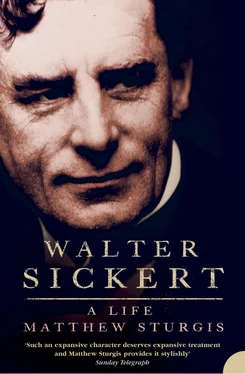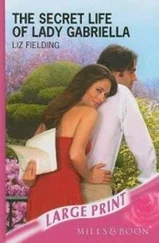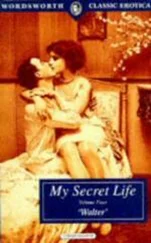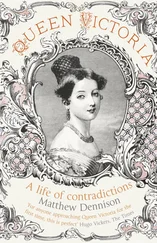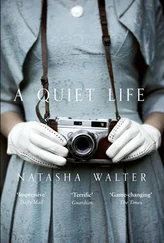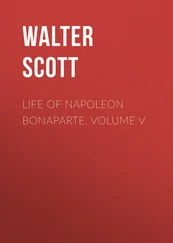His academic achievements were such that they might perhaps have been expected to lead on to university – his friend Alfred Pollard had already gone up to Oxford with a scholarship. 57 But the expense of a university education was beyond the Sickert budget. 58 Walter, it was recognized, must get a job. Initially, when consulted by his father – during one of their walks together on Wormwood Scrubs – as to his hopes for the future, he had suggested rather unhelpfully that he intended to be ‘An Universalgenie’ (he had been reading a life of Goethe). 59 Universal geniuses, however, were not a commodity in the employment market. Besides, Walter’s own views came into sharper focus during his last year of schooling. He was, his sister recalled, ‘in no doubt that his vocation lay in painting’. 60
This was the last thing that his parents wanted to hear. Oswald Sickert had dedicated his life to art and was keenly aware that he had not made his living from it. Although the evidence of great artistic fortunes was everywhere to hand – visible in the huge studio-palaces of Melbury Road, Holland Park – such riches were beyond his reach. And they were receding further. The high watermark of Victorian prosperity was already passing. Painting was an overcrowded profession, and Oswald Sickert was being crowded out. He had come to regard himself as a failure. 61 It was the Sheepshanks’ allowance rather than the meagre returns from any sales he might make that paid the household bills. And the Sheepshanks’ resources were finite: they could not stretch to provide Walter with the sort of prolonged and dedicated training that Oswald had enjoyed at Munich and Paris. Besides, although he had ‘a great opinion of Walter’s abilities in general’, neither he nor Mrs Sickert believed that they were ‘specialised in painting’. 62 He did everything possible to discourage his son from following him in what he described as his ‘chien de métier’. 63
In the face of such opposition, Walter made some efforts in alternative directions. He considered applying for the higher division of the Home Civil Service. But this, he discovered, would require three years’ coaching, which would be just as expensive as university. 64 He wrote to Professor Poole, asking if places at the British Museum Library might ‘be got separately from [such] general Examinations … and if you think there would be any chance for me’. 65 The answer did not encourage him to pursue this course. His father urged him towards any career where he would be sure of earning a living. 66 The law was suggested, and given serious consideration 67 – although this, too, unless begun in a lowly clerical capacity, would have required some expensive training.
Beyond these conventional options a more tempting vista beckoned. The stage. Extraordinarily, the idea was not thrown out of court. But then, compared to Oswald Sickert’s ‘dog of a profession’, acting had various attractions. It was not a calling that the Sickerts knew to be unremunerative – even if this was only because they knew very little about it at all. It was no longer socially beyond the pale, at least not in the artistic circles frequented by the Sickerts; and, unlike almost all other professions, it required no formal and expensive training, and no fees of entry.
They were encouraged, too, by the example of their friends the Forbes-Robertsons. John Forbes-Robertson, a prolific art journalist and lecturer, lived with his wife and five children in a large house in Charlotte Street, just off Bedford Square. 68 His eldest son, Johnston, although having begun an art training at the RA schools, had been obliged ‘by force of circumstances’ to give it up and seek a more immediately rewarding career. 69 He had found it on the stage. A family friend had got him a small part in a play at the Princess Theatre. And from that beginning he had managed to make his own way as an actor. He had performed in Samuel Phelps’s company, acted with Ellen Terry on her triumphant return to the London stage, and was steadily in work. 70 His younger brother, Ian, was just about to embark upon the same path. 71 Here were models for emulation. And if the stage offered little security, it was at least susceptible to energy and talent, and Walter – it seemed – had both.
He rounded off his school career, at the end-of-year Prize Day, by giving a stirring performance as Cardinal Wolsey in a selection of scenes from Shakespeare’s Henry VIII . 72 To his proud parents, appreciative teachers, and admiring peers, it must have seemed only too likely that he would succeed on his chosen path.
* The ‘Modern Division’ offered a less rigorously academic approach, with vocational courses in book-keeping and map drawing.
* This of course may be because the picture (now at the Walker Art Gallery, Liverpool), though found in Sickert’s studio at his death, was not by his hand.
* In 1877, Samuel Phelps, his previous thespian hero, had died at the age of seventy-four. Sickert walked to Highgate for his funeral (RE, 24).
* Sickert’s dramatic experiments did occasionally look beyond the example of Irving. Once, he dressed up as a maid and called on the Carters, pretending to be in search of a situation. He took in the whole family until Mrs Carter’s parting shot – ‘You know I don’t allow any followers’ – induced him to break into ‘an irresistible smile which gave the show away’ (Edith Ortmans, née Carter, TS, Sutton/GUL).
CHAPTER TWO Apprentice or Student?
I wonder all the managers in London are not after him.
(Maggie Cobden to Dorothy Richmond)
Sickert’s stage career got off to a false start. At the beginning of the New Year of 1879 he collapsed with a bad case of flu and was laid up for almost a fortnight. Although, as he wrote to his friend Pollard, he might have been able to ‘excel in all dying scenes, old men & anything feeble’, his availability was unknown. Instead he was obliged to channel his returning energies into schemes of his own. The days of his convalescence were spent – when not ‘feebly pottering about the neighbourhood with a stick’ – in devising plays. After toying with, and discarding, several ideas he decided to dramatize a novel by the German, G. F. Richter, and then mount a drawing-room production of it. Progress, however, was slow. 1
He hoped, on his recovery, to see Mrs Bateman, who had recently taken on the management of the Sadler’s Wells Theatre; but the main focus of his ambition was fixed, unsurprisingly, upon the Lyceum. 2 Irving was now in sole charge of the theatre, opening his first production on the penultimate day of the old year, to the rapturous acclaim of his supporters. He had engaged, as his leading lady, Ellen Terry, and in her he found a perfect foil for his own greatness. Her acting was considered to have an unmatched candour, and an emotional depth that owed something to the vicissitudes of her early life.
She came of theatrical stock. The daughter of actors, four of her ten siblings were also on the stage. In 1864, at the age of sixteen, she had given up a successful career as a child star and contracted an ill-advised marriage with the already middle-aged and finicky painter, G. F. Watts. He had been captivated by her distinctive grace, and spent much of their short period together recording it in drawings and paintings. The rest of the time he spent in repenting of his decision to marry. He had hoped, as he put it, ‘to remove an impulsive girl from the dangers and temptations of the stage’, but he soon discovered that the stage could not be so easily removed from the girl. His new wife could create more than enough drama in a domestic setting. After barely a year, they separated. 3 Ellen returned briefly to her family, before eloping with the mercurial architect and stage-designer E. W. Godwin. For five years they lived together happily in Hertfordshire, in sin and ever-increasing debt. Ellen bore two illegitimate children, Edith and Edward, before she was lured back to the theatre in 1874. * Her relationship with Godwin did not long survive her return, but in 1877, after finally receiving a divorce from Watts, she married the actor Charles Wardle (who performed under the stage name Charles Kelly), and achieved the haven of stability. At the time of her arrival at the Lyceum she was thirty-one and considered by discerning judges ‘the most beautiful woman of her times’ – even if it remained a mystery just how she achieved this with her pale eyes, long tip-tilted nose, broad mouth, and ‘tow-like’ hair. 4 Her presence at the Lyceum added a new lustre to the place. The adulation that had previously been fixed upon Irving alone became fixed upon her as well. She was one half of a twin-headed deity. And she was another reason for Sickert wishing to join the Lyceum company.
Читать дальше
